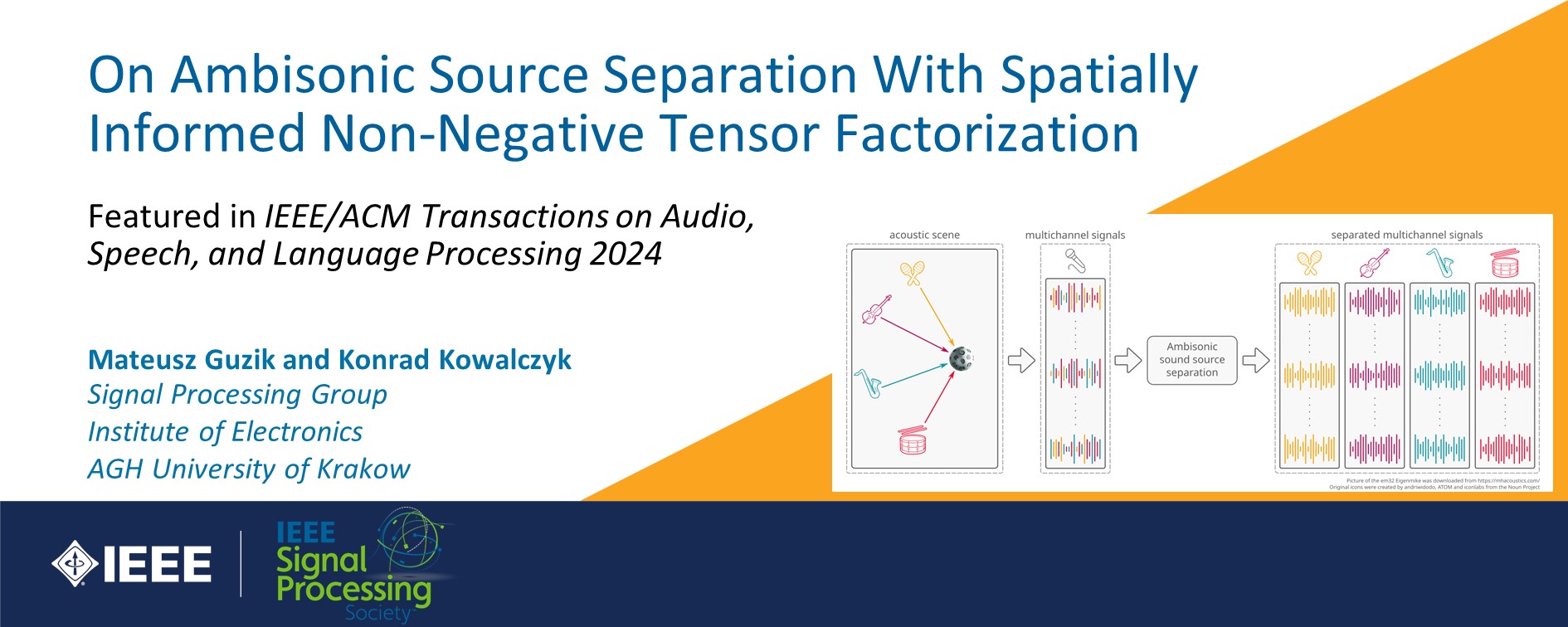We are happy to notify that a journal article by Mateusz Guzik on source separation from spatial Ambisonic signals has just been published on IEEE Xplore.
You can find audio examples at Github.
Title: On Ambisonic Source Separation With Spatially Informed Non-Negative Tensor Factorization
Authors: Mateusz Guzik and Konrad Kowalczyk
Abstract: This article presents a Non-negative Tensor Factorization based method for sound source separation from Ambisonic microphone signals. The proposed method enables the use of prior knowledge about the Directions-of-Arrival (DOAs) of the sources, incorporated through a constraint on the Spatial Covariance Matrix (SCM) within a Maximum a Posteriori (MAP) framework. Specifically, this article presents a detailed derivation of four algorithms that are based on two types of cost functions, namely the squared Euclidean distance and the Itakura-Saito divergence, which are then combined with two prior probability distributions on the SCM, that is the Wishart and the Inverse Wishart. The experimental evaluation of the baseline Maximum Likelihood (ML) and the proposed MAP methods is primarily based on first-order Ambisonic recordings, using four different source signal datasets, three with musical pieces and one containing speech utterances. We consider under-determined, determined, as well as over-determined scenarios by separating two, four and six sound sources, respectively. Furthermore, we evaluate the proposed algorithms for different spherical harmonic orders and at different reverberation time levels, as well as in non-ideal prior knowledge conditions, for increasingly more corrupted DOAs. Overall, in comparison with beamforming and a state-of-the-art separation technique, as well as the baseline ML methods, the proposed MAP approach offers superior separation performance in a variety of scenarios, as shown by the analysis of the experimental evaluation results, in terms of the standard objective separation measures, such as the SDR, ISR, SIR and SAR.
